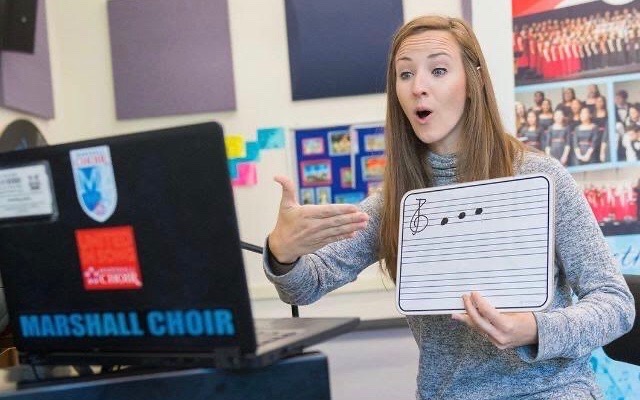A once energetic and collaborative elective has gone silent. Choir students, now confined to their own houses, can only turn on their microphones and sing together when celebrating someone’s birthday.
Choir classes now use Sound Trap, an application that allows them to record themselves independently and play all the recordings from the section together to hear the combined sound.
“I really think we’ve been able to make the best out of this situation,” sophomore Emily Paz said. “Sound Trap has helped me […] feel like I’m singing with my choir.”
Since the class relies on a synchronous and asynchronous model, choir teacher Kelli Pierson said she tries to work with each section one-on-one to avoid confusion.
“I try my best to give [students] time in class to do their assignments, but some students struggle with the independent work and meeting deadlines,” Pierson said. “Those that do put the time in [to] have quality audio turned into me will be used in our virtual choir projects.”
While Sound Trap does work as an alternative during distance learning, Paz said it still does not compare to singing together in the same location.
“I definitely miss being in-person,” Paz said. “There’s nothing better than singing in-person with a group of people.”

